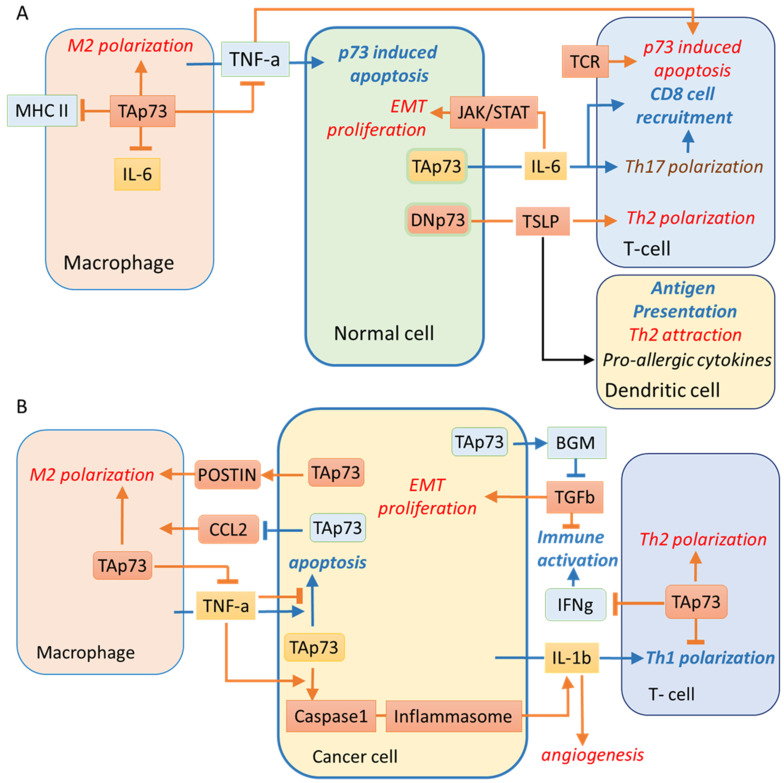Figure 4.
The p73-regulated signalling in normal, cancer, and immune cells. TAp73 in cancer cells and immune cells promotes the immunosuppressive cancer environment. In blue shown is cancer-repressing and in red—cancer-promoting signalling, respectively. Arrows represent the positive association, and pointers with blocks are negative associations with green and red anti- and pro-cancerous signalling, respectively. Yellow boxes represent dual signalling molecules with pro- and anticancerous properties. (A) In the normal cells, p73 promotes the IL6 production [144], which can have either pro- [187,188], or anti- cancerogenic effects by inducing Th17 v.s. Treg polarization [189,190]. In skin tissues, p73 regulates TSLR [151] that induces Th2 cell differentiation, thereby promoting chronic inflammation in atopic dermatitis and is associated with poor prognosis in several cancers [157]. (B) In breast cancer, TAp73 represses CCL2 secretion and pro-cancerogenic macrophage recruitment [97]. In contrast, TSLR induces p73 targets VEGF, TSLR, IL-1b, and IL-6 hence promoting breast cancer angiogenesis. In turn, IL1b has a plethora of pro-cancerogenic effects [191]; however, it can also induce the anti-cancerogenic Th1 polarisation [192] and is regulated by the p73/caspase1/inflammasome axis [150,193]. p73-mediated caspase-1 expression is induced by TNFa that also induces a pro-cancerogenic program in SSC [63] but apoptosis in endothelial cells, respectively [165,194,195,196]. The TAp73-induced expression of BGN inhibits the TGFb pro-oncogenic signalling [122]. In contrast, the p73-mediated Warburg effect [197] promotes acidosis, enhanced invasiveness [198], and M2 macrophage polarisation [93]. In turn, the p73 signalling in macrophages promotes M2 polarisation and represses TNF-a production, also promoting phagocytosis and lowering the MHC2 expression [159]. Noticeably, TNFa- or strong TCR-binding-induced apoptosis in T-cells was dependent on p73, but not p53 [163,199]. Moreover, in T-cells, TAp73 and DNp73 repress Th1 polarisation and IFNg production, promoting the immunosuppressive environment [171].

